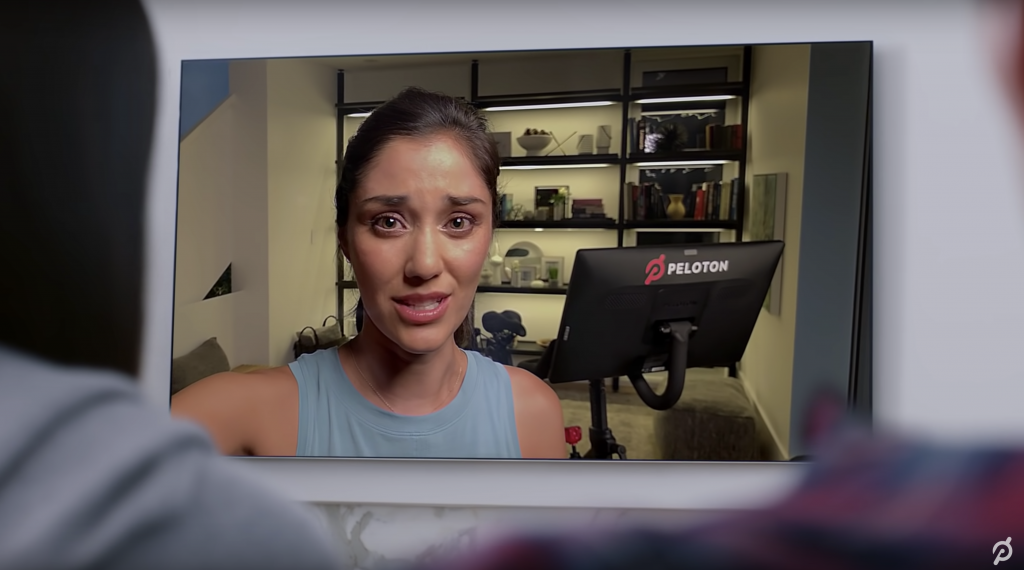
You’ve all seen it by now. The Peloton ad with the lady who looks trapped in an exercise bike nightmare. She gets a Peloton bike for Christmas and is quickly held hostage by early morning spin rides. Throughout the commercial she speaks into the camera, documenting every workout in what seems like a not-so-secret plea for help. The commercial ends as she and her husband sit on the couch admiring her video diary of workouts.
Weird, right?
Shortly after airing, parody after parody popped up on Twitter as people ridiculed Peloton for the way the “already fit Peloton lady” looked for approval from her husband after working out. Labeled sexist and dystopian, the ad went viral for all the wrong reasons.1 Even Ryan Reynolds brilliantly took advantage of Peloton’s advertising misstep by hiring the actress from the commercial to be in his new Aviation Gin ad.
I, too, made fun of the Peloton ad – but, full disclosure – I am a Peloton digital subscriber. I have been since 2018. I’ve bought into the program, enjoy the classes and would recommend it to anyone I know. It’s not just me enjoying them – Peloton has an estimated 1.4 million users. So, how did Peloton get it so wrong in this commercial?
The storytelling adheres to old stereotypes. The wife is steadfastly working out and appears to be looking for approval from her husband when she is done. Feels a bit like 1980s sitcom, don’t you think? This ad could have broken out of this stereotypical construct had they shown the husband and wife motivating each other and getting fit together.
Speaking of fit, Peloton has taken some fierce criticism from the public about the fact that the lead actress already looks to be in shape. This leads to a question: does the fact that she’s already fit make the ad more motivating or less believable?
The ad elicits no emotion (well, at least not the ones they intended). In my view, Peloton’s coaches are inspiring and honest, and their workouts are challenging. Their brand archetype feels like the Hero. Hero archetypes are brands like Nike or Adidas. Historically, their ads are inspiring, empowering and gritty. This Peloton commercial falls pretty short of that Hero brand voice. Maybe it’s because we realize these are actors just going through the motions. We can’t become emotionally invested in the make-believe storytelling.
How do you make sure you don’t fall into the same advertising trap Peloton did?
- Before you do any advertising or marketing: figure out your brand archetype. At Bozell, we like to dive into brand archetypes before we embark on a new client or campaign. This helps immensely to really know who our client truly is (or who they want to become) and allows us to focus and clearly communicate to the target audience. Seems simple, right? But it’s often overlooked in let’s-hurry-up-and-get-this-ad-done mode. Not familiar with how brand archetypes can help you communicate to your target audiences? Check out this book: The Hero and The Outlaw. Building Extraordinary Brand Through the Power of Archetypes. I highly recommend it.
- Weigh the pros and cons of using real people versus actors. Peloton’s mission is: to empower people to be the best version of themselves. Their mission is not to empower actors to be the best versions of what they think real people should be. This commercial could have been so much more compelling had they been following the journey of a few of their users. Show those real stories, show the emotion, the struggle, the resilience, the failures and the wins. Those are real moments we can all identify with and be inspired by.
- If you’re going to create a commercial for a product, use the product. If you’re an agency/in-house marketer, take the time to immerse yourself in the brand experience – whatever that may be. I can tell you, as a Peloton user, that whoever wrote this commercial probably hasn’t done a Peloton workout themselves. It feels so far removed from the actual Peloton experience. So, take the time to learn and explore the product or experience of the brand you’re advertising. It could be in this exploration that you find the little nugget of knowledge needed to convince others that your product is worth trying.



